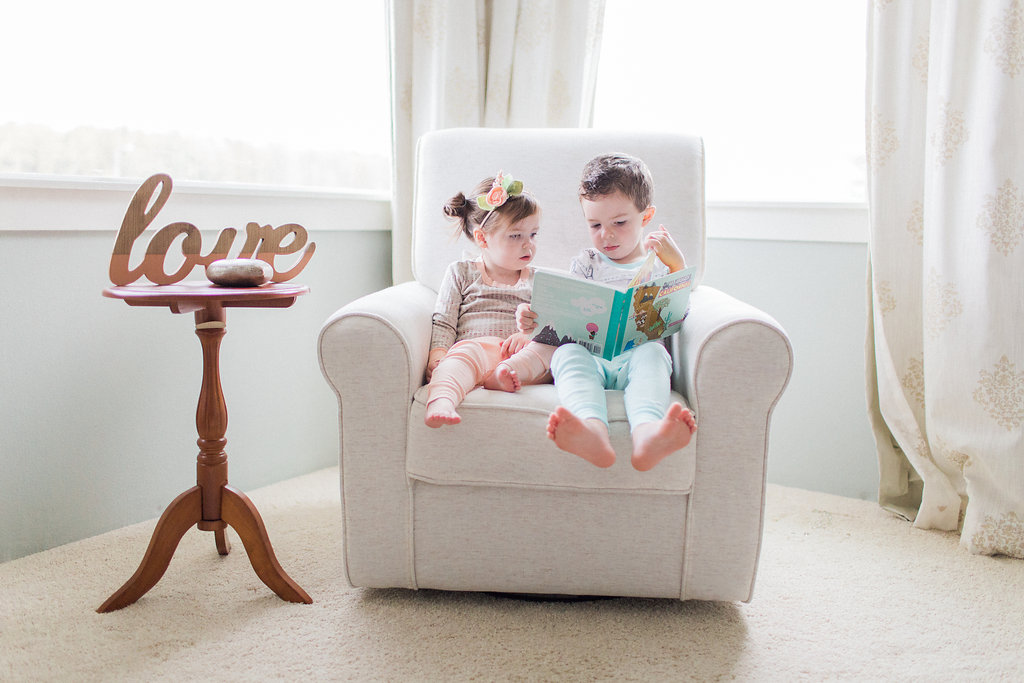Baby & Toddler Nap Schedules: When, Where & How Long your Child Should be Napping for
/How many naps does my baby and/or toddler need? How long should they be? (Bookmark or PIN this page, trust me you’re going to want to come back!) Let’s make your life just a little easier- grab a glass of Pinot and digest this nap breakdown from birth to 3+ years old.
Naps will forever in my heart be a love-hate relationship. While I LOVE getting a much-needed break to clean my house (orrrr catch up on Real Housewives), sometimes I loathe not being able to attend a social function or leave for a weekend vacation early because I have to check into “napjail”. However, consistency with naps is extremely important, and without it all sorts of things can fall out of whack: meltdowns in Target, endless crying, nap time battles, and sleeping the car for 2 minutes (and having to forgo your DVR date with the Lisa Vanderpump because it’s given them enough juice to last another hour, ugh.)
BIRD ALL-NATURAL TEETHER (SIMILAR HERE)
Let’s start with the newborns. Although 0-3 month old infants are notorious for falling asleep on the job (i.e. breastfeeding) or in the car/stroller/swing, they should be napping every 45-90 minutes from the last time they woke up. YES- EVERY 1.5 HOURS that sweet little newborn needs a snooze. This can work itself out to be about 4-5 naps throughout the day, and at this age they can virtually sleep anywhere, but it’s still a fantastic idea to get a least one of these naps in the crib if possible.
4-6 Months Old: Depending on the length of the naps, these babes can take 3-4 naps a day, with the last catnap taking place between 5-6pm. I like to work towards 3 naps at this age with my clients, only because the 3rd nap is dropped within a few months. Ideally, you’ll want to shoot for 3-5 hours of daytime sleep, with the first & second nap averaging at least an hour, and the catnap about 45 minutes. If your baby isn't already sleeping in his crib for all naps, this is the ideal age to begin the transition.
6-9 Months Old: The 3rd catnap should begin to disappear- this is where you’ll notice your little one increasingly has trouble going down (or falling asleep at all) for this last power nap. Once you notice this continuously happening over a course of 2 weeks, go ahead and increase his wake windows to at least 2 hours and drop that last nap. Over this transition, some days he/she will need 3 naps, some days only 2, but the transition only lasts about 2 weeks. Don’t forget when naps are dropped, you’ll want to move up bedtime by 30 minutes for at least the first week or you’ll have major bedtime battles. Overall whether it’s 2 or 3 naps, your child needs about 3 hours of daytime sleep.
9-12 Months Old: Only two naps remain, averaging 1.5 hours each. Both naps should be in the crib, or begin doing so ASAP. If your child is sleeping through the night now, that first nap can begin about 2.5-3 hours after waking, earlier if not.
12-15 Months Old: The majority of daycares will push children to one nap, but if you can hold off or at least give your child the chance to nap twice still on the weekends or after a big day, go ahead and do so. This is the age most children will have those meltdowns in the Target dollar aisle, because parents mistakenly drop the second nap a little bit too early. Mom tip: Always bring a really good emergency snack as backup for a fussy toddler.
15-18 Months Old: The 2nd nap is beginning to disappear similar to how the catnap did when your babe was 6-9 months old (I know, I blacked out everything that happened in infancy already too). You’ll notice over two weeks that the naps will become shorter, or your baby won’t be able to fall asleep easily. You’ll want to slowly transition in 30 minute increments to eventually get to a 12pm or 1pm nap time. This one nap should last about 1-3 hours, and begin about 5-6 hours after waking.
18 Months Old-3 Years Old: One nap remains, usually from 1-3pm in the afternoon. After the 3rd birthday you will sadly notice this nap begin to disappear as well. I recommend if your child stays at home to enforce “quiet time” in those hours still in their room with quiet activities, or you risk them accidentally passing out in the car coming home from dinner or having a complete meltdown by dinnertime. A Gro-Clock is an amazing tool to use at this age, to help children understand when they are and aren't allowed out of their rooms.
In the end, all other rules apply, including:
- Swaddle (0-6 months) for nighttime and nap times; dummy-proof & crazy soft swaddle EVER here
- Comfy pajamas for nap time (who wants to sleep in tight pants or a dress?!) Our favorite buttery-soft ones come from Finn & Emma.
- White noise is continuously running; low rumbling like this one is best
- Room is completely dark
- The same sleeping environment is encouraged ( meaning one place over and over, or to start, at least one nap in the desired sleep place per day), we love this Dock-a-Tot for my toddlers, $10 off with this link
- Understand the Wake windows by age
- Pause before rushing in to see if child can resettle on their own first if nap is less than 45 minutes
- Feed upon WAKING from sleep, not before (bedtime is the exception)
So by now you've probably had enough of this nap talk, ready for a nap of your own, or you just need a refill. I hope this post will make your life a whole heck of a lot easier, and trust me that 95% of children fall within these guidelines above. As always, contact me if you need any help and I'll be glad to take a look at your situation and recommend some great fixes that fit your lifestyle and child's temperament.








![•• NEWBORN Naps: “My Baby is 3 Months....is it too late to try your napping method [that was featured on the live video yesterday] to get him to sleep?”
-
Short answer: Absolutely!! This is best attempted at this age for first n](https://images.squarespace-cdn.com/content/v1/552f316ae4b0e53cd8fb12c2/1530196124730-11H0MVV055VSVI0L8MYC/image-asset.jpeg)














